OP Sequence
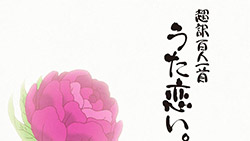 |
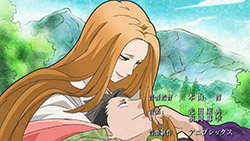 |
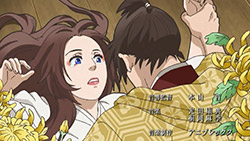 |
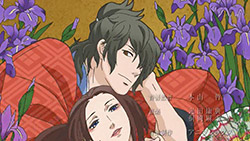 |
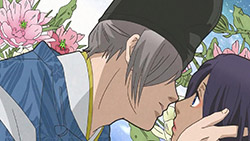 |
 |
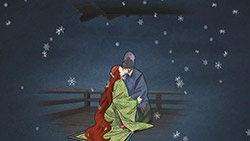 |
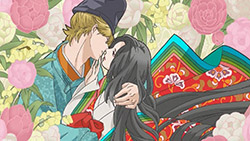 |
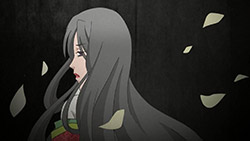 |
OP: 「ラブレター・フロム・何か?」 (Love Letter From Nani ka?) by ecosystem
Watch the OP!: Streaming ▼
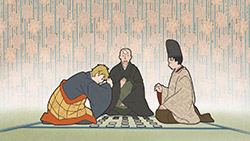 |
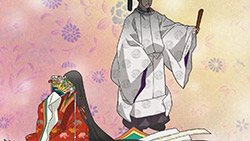 |
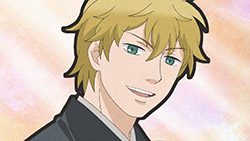 |
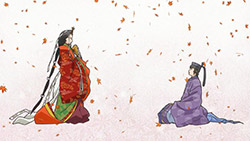 |
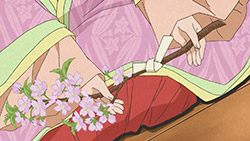 |
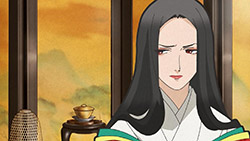 |
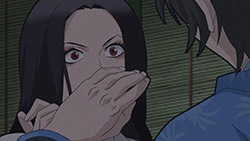 |
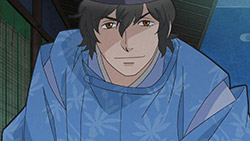 |
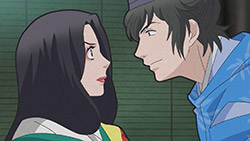 |
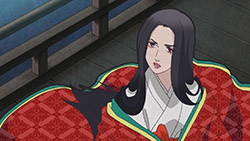 |
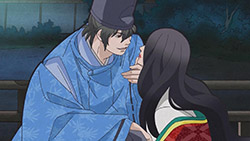 |
 |
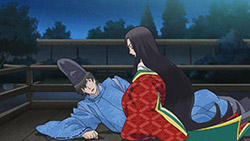 |
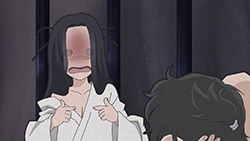 |
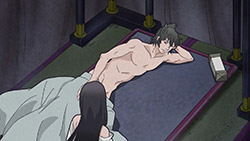 |
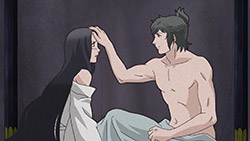 |
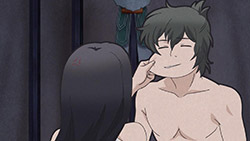 |
 |
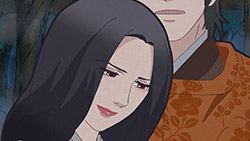 |
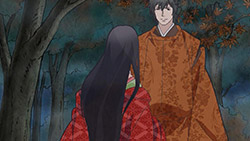 |
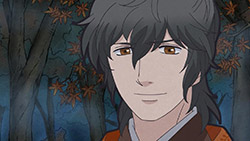 |
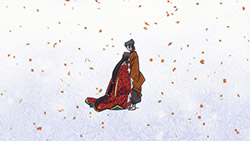 |
 |
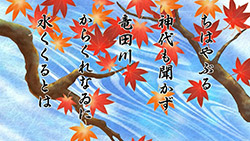 |
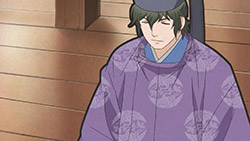 |
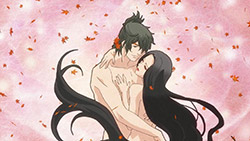 |
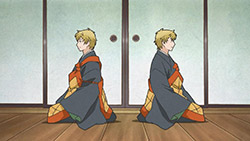 |
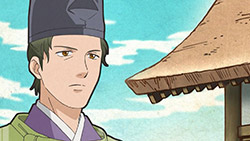 |
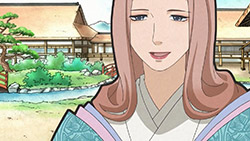 |
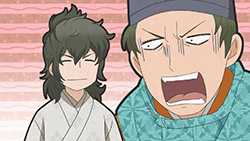 |
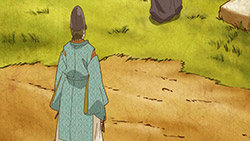 |
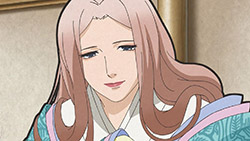 |
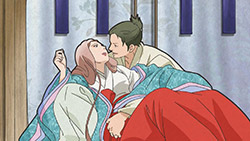 |
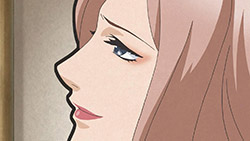 |
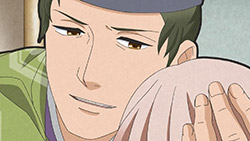 |
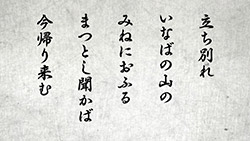 |
「高子と業平 在原業平朝臣/行平と弘子 中納言行平」 (Takaiko to Narihira Arihara no Narihira Choushin/Yukihira to Hiroko Chuunagon Yukihira)
“Takaiko and Narihira – Court Retainer Arihara no Narihira/Yukihira and Hiroko – Middle-Rank Councillor Yukihira”
Chouyaku Hyakunin Isshu: Uta Koi not only takes the audience back to the days of old, but also takes them back to the days of high-school English class when using SparkNotes and Wikipedia was the solution to everything. It certainly lives up to the claim of being “super liberal”, and while there is no doubt in my mind events have been dramatized, I’d have to say I’m liking Uta Koi‘s foray into the summer season. And also a note: despite what my drivels may imply no knowledge of the poems or literary analysis is required! The poems are not terrifyingly difficult, and the analyses are purely to supplement, and is not necessary to enjoy the show in any shape or form.
The set-up is simple, so there’s no need for drawn-out explanations of setting or premise. With just a short introduction by Fujiwara no Sadaie (Kaji Yuuki), the premiere digs right into the story of the poem made famous by Chihayafuru:
Even when the impassionate gods
Held sway in the ancient days,
The water in Tatsuta River
Has never been dyed
Such an autumn red (Ogura Hyakunin Isshu)
Written by Ariwara no Narihira (Suwabe Junichi) for the imperial consort Fujiwara no Takaiko (Hayami Saori), the first half of the episode is dedicated to uncovering the origins of the poem – a bittersweet affair between the two aristocrats. The courtship certainly turned out to be very different from what I had expected, as Fujiwara no Takaiko turned out to be quite the tsundere (or is it a kuudere?) and Ariwara no Narihira a seemingly cavalier playboy. The two work quite well though, but it’s a love that can never be. Affairs – especially the imperial kind – are always a little bittersweet I find, since the love can never go anywhere. Somewhere along the line the lovers will be forced to part, as the two are here. They could have continued running theoretically, but where would it have led them? Treason is not a light charge, and it’s highly likely they would have both faced death. Their parting as lovers was quite well done, if not a tad understated, and their reunion as imperial consort and vassal was a lot more light-hearted and upbeat than I thought it would be. I do like how it was portrayed though, and the implication it sends – that life is not built around that ‘one great love’, if you will. Both of them will certainly never forget, as the scene suggests, but life does go on and that love should not be so aggrandized that one stops living in the present.
Ariwara no Narihira’s love affair might have ended in a bittersweet manner, but the second poem showcased by his older brother Ariwara no Yukihira (Endou Daichi) tells of a more grounded and heartfelt love story:
Though we are apart,
If on Mount Inaba’s peak
I hear the sound
Of the pine trees growing there,
I shall return to you (Ogura Hyakunin Isshu)
Yukihira’s tale is much less romantic and grand in terms of the scale and dramatic tension of the love itself, but it was a fitting contrast to Narihira’s relationship with Takaiko. It’s also a testament to the difference between the two brothers, as the younger one is more like a whirlwind and the older one a sturdy tree – I appreciate the fact this was shown rather than told, with the love stories acting as a framework for comparison. Narihira’s clandestine affair carries a sense of excitement and is full of passion, as evidenced by the words he uses in his poem. In particular, I find “autumn red” is a vivid imagery that evokes feelings of strong passion, as red has always been a color associated with love. Add the word “autumn” in there, and the viewers are instantly reminded of the beautiful red maple leaves that mark the coming of fall – the sheer vivacity of the colors add fire to the emotion. It’s also noting that the maple motif was constantly used throughout the first half, which reinforces the impassioned feelings for each other. I could go on and on about this, but that would be digressing too much!
On the other hand, Yukihira’s poem to his wife Hiroko (Kobayashi Sanae) is one marked by dedication and unchanging emotion – no matter how far apart they may be, he will return if she should call for him. The use of distance is a pretty great way to illustrate his love for her, and his promise to return is a testament to the magnitude of that love. One thing that might be difficult to understand about this poem is the third and fourth line; the metaphor is a little vague at first, and there are several elements at play. The most obvious device is the personification of the pine trees – they don’t make sounds as they grow. Next, the context of the poem needs to be taken into consideration, which is where the adaptation’s dialogue is such a great help. The poem is the declaration of Yukihira’s love for his wife, an earnest declaim she can call for him if she needs. With that in mind, the “sound of the pine trees growing” starts to make a little more sense, and it can be taken as a stand-in for Hiroko longing for her husband instead. It’s also important to note the sense of time associated with the image – theoretically, a tree will never ever make a sound as it grows, and compounded with the first line, the metaphor can be taken as fantastically flowery way of saying, “No matter where and no matter when, if you need me, I will come to you”. Finally, the third and fourth line imply a deeper connection that can’t be encompassed with a simple verbal call, which is why the poem is all the more sincere and romantic.
The adaptation did a splendid job bringing the relationship to life, and the dialogue between Yukihira and Hiroko was particularly well done and went a long ways in illustrating the deep bond shared by married couples.
Needless to say, I’m impressed by Uta Koi‘s premiere – the art is distinct, but is absolutely gorgeous, and the stories themselves are quite the treat. What impresses me the most, however, is the show’s ability to deliver a proper beginning, middle, and conclusion to each of the two vignettes. With roughly around 10 minutes for each portion, such a feat is not easy to accomplish, but Uta Koi manages to build an engaging world around the two poems, telling two self-contained tales that has all the elements of a well-thought out progression. Not a second is wasted, and each line of dialogue is chock full of purpose and is meant to convey something to the audience – considering all this, it’s amazing how easy to watch the show is. No prior knowledge of the poems or Japanese history is required (always a bonus), and even without paying attention to every single word, it’s very easy to enjoy this adaptation. To add to all the positives, there is absolutely no need to worry about those pesky “what-ifs” or wondering if the couple is going to get together or not! Everything is streamlined, but nothing is left out!
This is a beautiful series (for both the eyes and the mind), and it’s a surprisingly friendly adaptation for those not familiar with the original work and/or history. Heck one doesn’t even have to like poetry to enjoy Uta Koi – the only thing the show really needs from its audience is a cup of nice, hot tea to accompany the lovely stories it has to tell.
Note: I am using, and will continue to use the English translations found on this site, as it seems to be the closest to the original translations by McCauley in his book concerning the 100 Poets.
tl;dr: @SaberMochi – A strong premiere with beautiful art and stories. Looking forward to the second ep! #UtaKoi
Full-length images: 2, 8, 10, 11, 15, 20, 21, 23, 24, 25, 26, 28, 29, 31, 32, OP 6.
ED Sequence
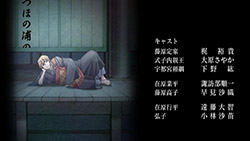 |
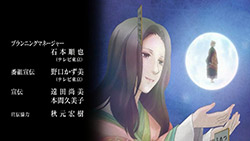 |
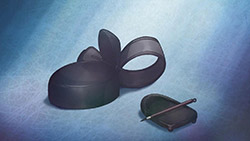 |
ED: 「Singin’ My Lu」 by SOUL’d OUT
Watch the ED!: Streaming ▼
Preview
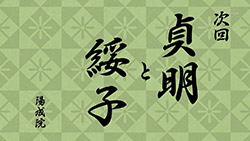 |

Looks like a great series will check it out! Looks like it would be under appreciated like Chihayafuru
the bold line of the art is disturbing. but the plot story is good tough
Looks like someone bought some new Sharpies at the art supply store and got a little carried away.
I do like the art I’ve seen, and your post on it encourages me to check this out.
So if anybody who knows a bit about drawing manga/anime can answer it: what’s the point of the bold outline? I’m sure that I’m not the only one who feels odd looking at it. Is it just supposed to be “art” and nothing else? Huh? The only plausible reason I can think of is that maybe having the bold outline made painting in photoshop easier or something technical shortcuts like that. I dunno. No idea.
The staff probably tries to give the vibe of classic japanese artworks with that kind of line. Yes, I am aware that bold outline is an influence from western animation, but it does give a flat-ish vibe just like those in classic art. (Though with it I can only see funny comical moments :/) The sketchy backgrounds and patterns maybe have something to do with this too….
The bold outlines are probably there in order to recreate the feel of Japanese ukiyo-e woodblock prints. Ironic you should suggest it making making Photoshop easier, because the black outline in ukiyo-e would make the woodblock printing process easier as it would mask minor registration errors.
http://tvtropes.org/pmwiki/pmwiki.php/Main/ThickLineAnimation
It’s probably an influence from western animation. I remember that Koe de Oshigoto used it as well.
You’ll be telling me next that most of the major 20th century Western art movements weren’t inspired (or provoked) directly or indirectly by Japanese ukiyo-e prints.
@Angelus agree, or basically all European art from the mid-19th century on.
Hyakka Ryouran Samurai Girls anime uses thick line most often to simulate the old style drawing…
http://1.bp.blogspot.com/-Eouxvr5fE64/TfmF_W9UZiI/AAAAAAAACU8/n58ip2HSMrk/s1600/Hyakka%2BRyouran%2BSamurai%2BGirls.jpg
http://rinerei.files.wordpress.com/2010/09/zero-raws-hyakka-ryouran-samurai-girls-01-mx-1280×720-x264-aac-mkv_snapshot_19-22_2010-09-04_16-31-59.jpg
This looks good. I’ve always been interesting in stuff like this ever since I read The Tale of Genji.
I should add that during the Heian period, it was fashionable for women to pluck their eyebrows and re-draw them high up on the forehead. Looks like the animators choose not to illustrate this.
When his wood grows he will return to her.
Well played, sir.
heian period. beautiful clothes. 2 romance stories per week. suwabe junichi.
what more could a girl ask for?
give me more UtaKoi~
I have no idea why CR decided to pick this up, but I’m glad they did as I suspect we weren’t getting subs any other way. Great post!
Reminds me a bit of Thermae Romae, better animation though. Funny and romantic short stories, perfect for the fujoshis. I’d like to hear your thoughts on it too Enzo.
You will later today… 😉
Thanks! You have noooo idea how absolutely relieved I was when I saw CR’s announcement. I was like… “Do I have to blog off raws every week?” That would’ve been… OTL to the max lol.
I thought the romance genre is having a dry spell having only 1 stand out (are there two) this year. Is this show going to bombard me with these romances? Saori’s voice is a bonus.
ever since chihayafuru i’ve always been interested in the 100 poems. this anime came out at the perfect time! 🙂
I am a big fan of poetry no lie, I’ve been writing it for a little over 10 years now but I do have some concerns with this series… The episode lacked any sort of emotional punch or gravitas because of what I think was poor voice work. Most of them felt wooden and removed from the characters. Also there was a lack of chemistry between the two pairs. I don’t feel like the foil between Narihira and Yukihira was that effective considering that their relationship both ended giving the fruit of true love. Sure their statuses end up different but that is because of circumstances. You could argue that it is the choices that they make that give them the results of their respective unions but I would argue that in the end it doesn’t matter, they both abandon their lovers. Thats where the metaphors and storytelling fall apart because there is no clear message and no clear direction in the storytelling. I’m following this on my blog too and I’m hoping future episodes are better!
Man, what’s this Ariwara no Narihira-sama’s address – I want him on my Christmas card list!!!
Were I the wind,
unfettered and free,
to breeze past the screens
and behold what lies beneath.
I love this character! I’m going to be taking many notes with this series…
They are trying to imitate old japanese Ukio painting; or what westerners called Japonism, no shadows; flat colors tick lines;
http://en.wikipedia.org/wiki/Ukiyo-e
http://en.wikipedia.org/wiki/Japonisme
Sorry, but you missed the point of “Tachi wakaru”. The final interpretation is fine (though it would be pretty hard to misunderstand), but it’s not the pine trees he’s supposed to hear xD
http://myanimelist.net/forum/?topicid=458891&show=40#post51
Check my post to see what I mean.
I did see your post, and while it does make sense, I’m no master of the Japanese language so I’m reluctant to depart from the source I mentioned in my post, since what they did was edit a translation published into a book by McCauley – it might not be the best option out there, but I hope you understand my desire to stick with a “published” source, so to speak. So yeah… I don’t – and can’t – translate these on my own so I’m afraid I can’t do anything about the translations I’m using XP Hope you understand!
And I’m pretty sure I said that pine trees = metaphor…?
Pine trees=Metaphor, OK, but it’s a slightly different kind metaphor than the one we usually see in western poetry.
Ah, but if you don’t know the language then that’s OK. I can understand why you want to stick to official translations.
Thanks for understanding – there are a lot of intricacies in the Japanese language I’d love to discuss if only I had the knowledge… ;___; For example the “puns” that poppei mentions below would’ve been something I would’ve been all over if I was fluent in Japanese -__-
But alas, the poetic English interpretations are all I can use and my analysis will be limited to that, I’m afraid.
I’m not used to the art, but other than that I think I’ll enjoy this series. It was a lot more humorous than I had expected.
This poem has two pivot-words (puns).
The word いなば (inaba) is a place name (因幡), but it also means 去なば (leave).
The word まつ (matsu) means 松 (a pine tree), but it also means 待つ (wait/long for).
Though we are parted (since I leave for Inaba where),
On the peak of the mountain
The pines grow
When I hear you pine (wait) for me
I’ll come back to you at once.
Yeah… seems like the meaning is “hidden within the puns” so to speak. XD I’m guessing the translations are the literal version, and the puns are supposed to be the simplified meaning? O:
Sorry. I can’t explain well in my clumsy english.
I agree with you that no knowledge of the poems or Japanese history is required to enjoy the show.
But even so, I can’t help but recommend the website below which will make the show more profound;
http://www.jlit.net/authors_works/premodern/hyakunin_isshu/poems_16-20.html
Thanks for blogging this, would have missed it otherwise – sounds like now I’ll pick it up.
Am I the only one who’s really surprised by the ending theme? Wouldn’t have expected half-in-English rap as the ending to an anime set in imperial Japan…
Going off the screenshots this doesn’t look anything like I imagined. I was expecting it to be a little more serious. Not sure if I want to pick this one up now.
I think the black outlines and the extra attention to patterns and details kinda make the animation look art noveau-ish~ it was one of the things that made me love it <3
I've seen some series employing this style like GOSICK, albeit it was only used in the OP and the lines aren't as thick (https://www.youtube.com/watch?v=iOrkj_MFXm8) , so it made me happy to find a series that plan to add outlines to all of the characters for its duration xD
Does anyone know where it’s shown the second image of the opening sequence (the one with Sadaakira caressing his wife’s hair)? Because I’m quite sure it does not apper in the second epidose 🙁
*appear
I love the bold outlines. I draw mangas myself and believe me when i tell you they aint easy to put on. it’s like having to redo the initial outlines you made.
I love the plot and the rich, old stories. Oh, the complex society of the Heian period.